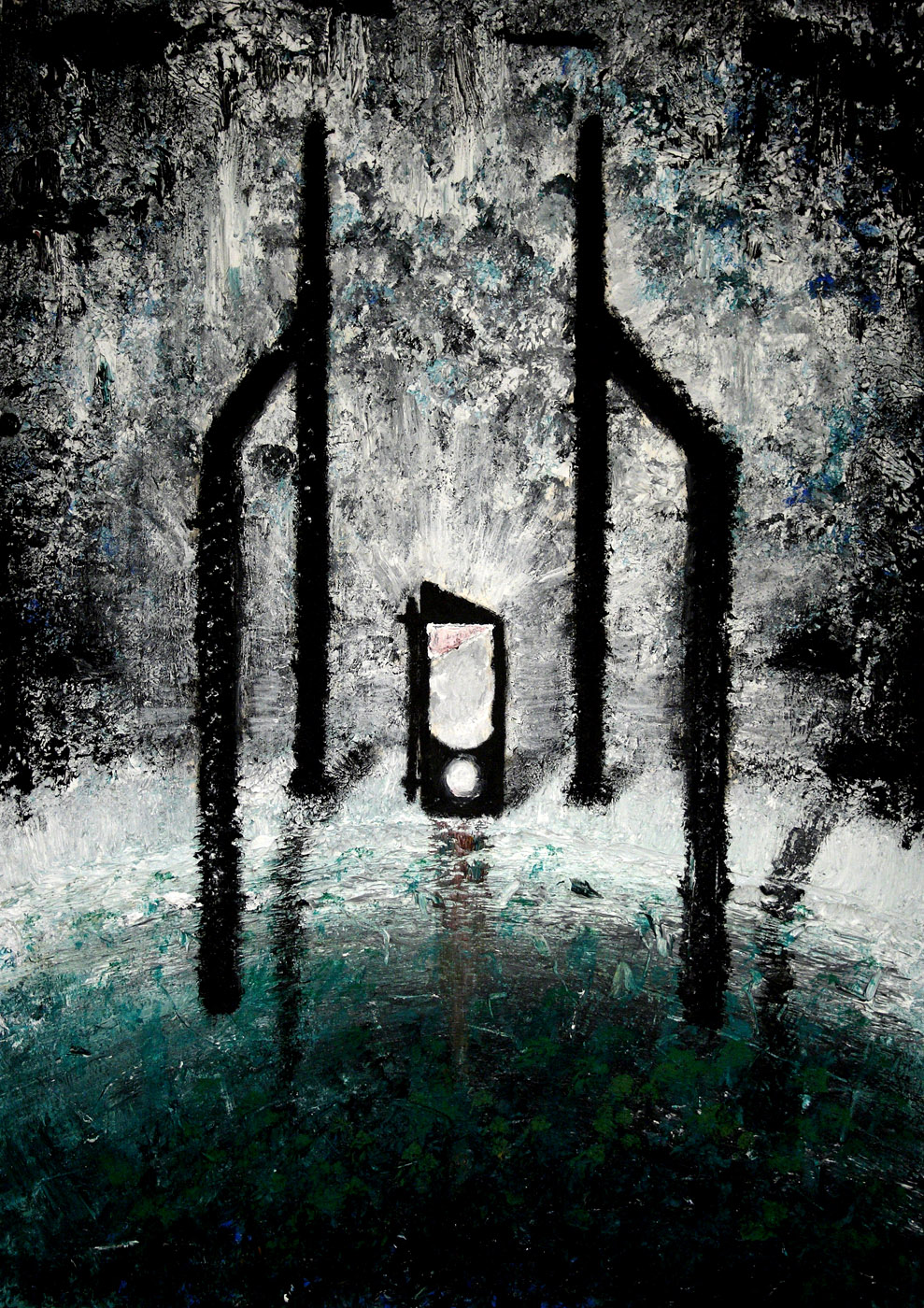ShopDreamUp AI ArtDreamUp
Description
Taken from "Georges Bataille: Postscript to the Execution" article by N. Speranskaja:
IV. Sacrifice as the key to Self-Knowledge.
The ancients believed that the head and the hair contained not only the life force of man, but also the repository of his spiritual essence, which is revived in a new body after the old one has been absorbed by death. Therefore the loss of the hair and the head seemed to be equally dangerous. Least of all, Bataille wanted to return - his desire was to not return from the edge of possible. In order to step over the brink of no return, it was necessary to become Acephale; to enter into an endless maze, completing the sacrifice, to self-execute, to self-withdraw. This ritual had another point for Bataille and the members of the secret society, perhaps most important one - the sacrifice was the key to self-knowledge, to a complete and total experience of one’s true nature. But only the subsequent sacrifice of oneself leaded out even beyond the original nature, Para-Prakriti. If the sacred murder of one of the Initiates allowed the Priest to approach the Death, then at the very moment when he was taking his place, his Total Entry into the Death was occurring. There were no more any approaches, or retreats. It was Total Violent Entry into the Death.
Researches on Chinnamasta, one of the Ten Mahavidyas, provide an interesting piece of information on the rite of ritual suicide, which was practiced in Ancient and Medieval India: "On the one of the images from Vijayanagara (Andhra Pradesh), we see a clever device, a special machine designed to perform the following act: it is something like a guillotine, but the lever by which it operates, is in hands of a man who is to be sacrificed. When the man presses on the lever, a knife blade falls down on his neck and his head rolls down straight to the feet of the deity, who is in front of this act of sacrifice. We also see two females beside the main figure, most likely the wives of the one who performs ātmayajña. There is also a male figure, whose status is not clear - probably a servant who is there to help. The main point is that, despite the presence of others, it is adept himself, who must make a decisive move, with his own hand."
Researchers are inclined to see the meaning of this ritual as thanksgiving to god or an attempt to bargain with God of Death for a life of another person, sacrificing your own. I would call it a simplified understanding and dare to put forward a different version: committing a ritual self-decapitation, the person likened himself to a deity, becoming a sacrificial meal, and also the one who, executing himself, tasted it. This act shows how the priest and the offering, the murderer and the self-killer, the man and the god, merge into a fiery sharp unity, instantly throwing out themselves from the world of thingness. At this level, there is no Other, there is no separation between the subject and the object. Pressing the lever does not start the Song of Death. This brief flash contains everything - the limit and the instantaneous "cross in".
The sacrifice for Bataille does not imply a gesture turned to god. More than that, it generally did not consider any of the subjects; it withdrew the offering from the world of the profane, returning it to the world of the sacred. For Bataille, a "Supreme Deity" did not exist; it was brutally murdered during the time of Zarathustra.
...
IV. Sacrifice as the key to Self-Knowledge.
The ancients believed that the head and the hair contained not only the life force of man, but also the repository of his spiritual essence, which is revived in a new body after the old one has been absorbed by death. Therefore the loss of the hair and the head seemed to be equally dangerous. Least of all, Bataille wanted to return - his desire was to not return from the edge of possible. In order to step over the brink of no return, it was necessary to become Acephale; to enter into an endless maze, completing the sacrifice, to self-execute, to self-withdraw. This ritual had another point for Bataille and the members of the secret society, perhaps most important one - the sacrifice was the key to self-knowledge, to a complete and total experience of one’s true nature. But only the subsequent sacrifice of oneself leaded out even beyond the original nature, Para-Prakriti. If the sacred murder of one of the Initiates allowed the Priest to approach the Death, then at the very moment when he was taking his place, his Total Entry into the Death was occurring. There were no more any approaches, or retreats. It was Total Violent Entry into the Death.
Researches on Chinnamasta, one of the Ten Mahavidyas, provide an interesting piece of information on the rite of ritual suicide, which was practiced in Ancient and Medieval India: "On the one of the images from Vijayanagara (Andhra Pradesh), we see a clever device, a special machine designed to perform the following act: it is something like a guillotine, but the lever by which it operates, is in hands of a man who is to be sacrificed. When the man presses on the lever, a knife blade falls down on his neck and his head rolls down straight to the feet of the deity, who is in front of this act of sacrifice. We also see two females beside the main figure, most likely the wives of the one who performs ātmayajña. There is also a male figure, whose status is not clear - probably a servant who is there to help. The main point is that, despite the presence of others, it is adept himself, who must make a decisive move, with his own hand."
Researchers are inclined to see the meaning of this ritual as thanksgiving to god or an attempt to bargain with God of Death for a life of another person, sacrificing your own. I would call it a simplified understanding and dare to put forward a different version: committing a ritual self-decapitation, the person likened himself to a deity, becoming a sacrificial meal, and also the one who, executing himself, tasted it. This act shows how the priest and the offering, the murderer and the self-killer, the man and the god, merge into a fiery sharp unity, instantly throwing out themselves from the world of thingness. At this level, there is no Other, there is no separation between the subject and the object. Pressing the lever does not start the Song of Death. This brief flash contains everything - the limit and the instantaneous "cross in".
The sacrifice for Bataille does not imply a gesture turned to god. More than that, it generally did not consider any of the subjects; it withdrew the offering from the world of the profane, returning it to the world of the sacred. For Bataille, a "Supreme Deity" did not exist; it was brutally murdered during the time of Zarathustra.
...
Image size
989x1400px 641.22 KB
Make
Canon
Model
Canon EOS 400D DIGITAL
Shutter Speed
1/15 second
Aperture
F/5.0
Focal Length
37 mm
ISO Speed
800
Date Taken
Feb 16, 2012, 6:55:04 AM
Sensor Size
5mm
© 2012 - 2024 Unlifer
Comments0
Join the community to add your comment. Already a deviant? Log In

































